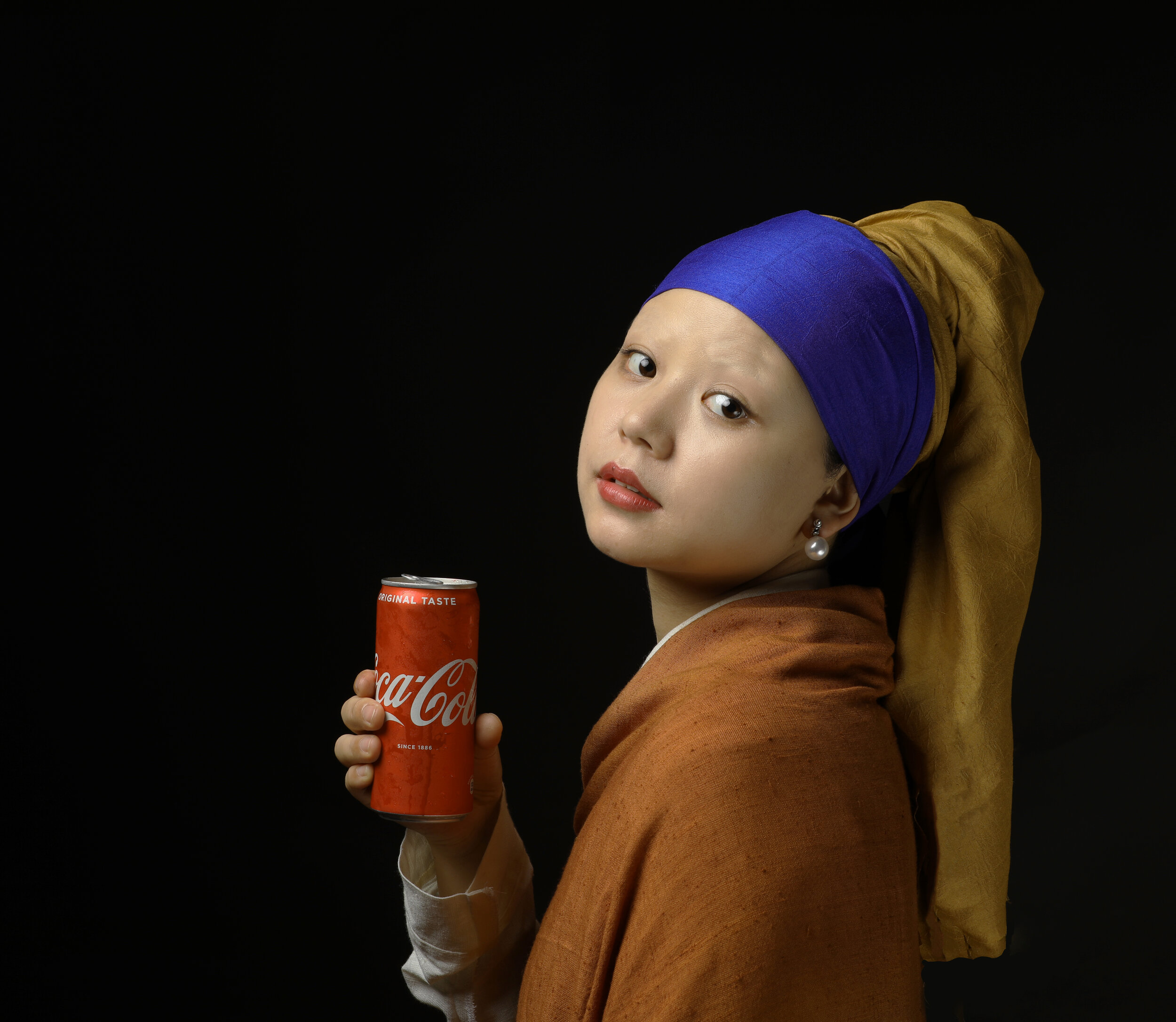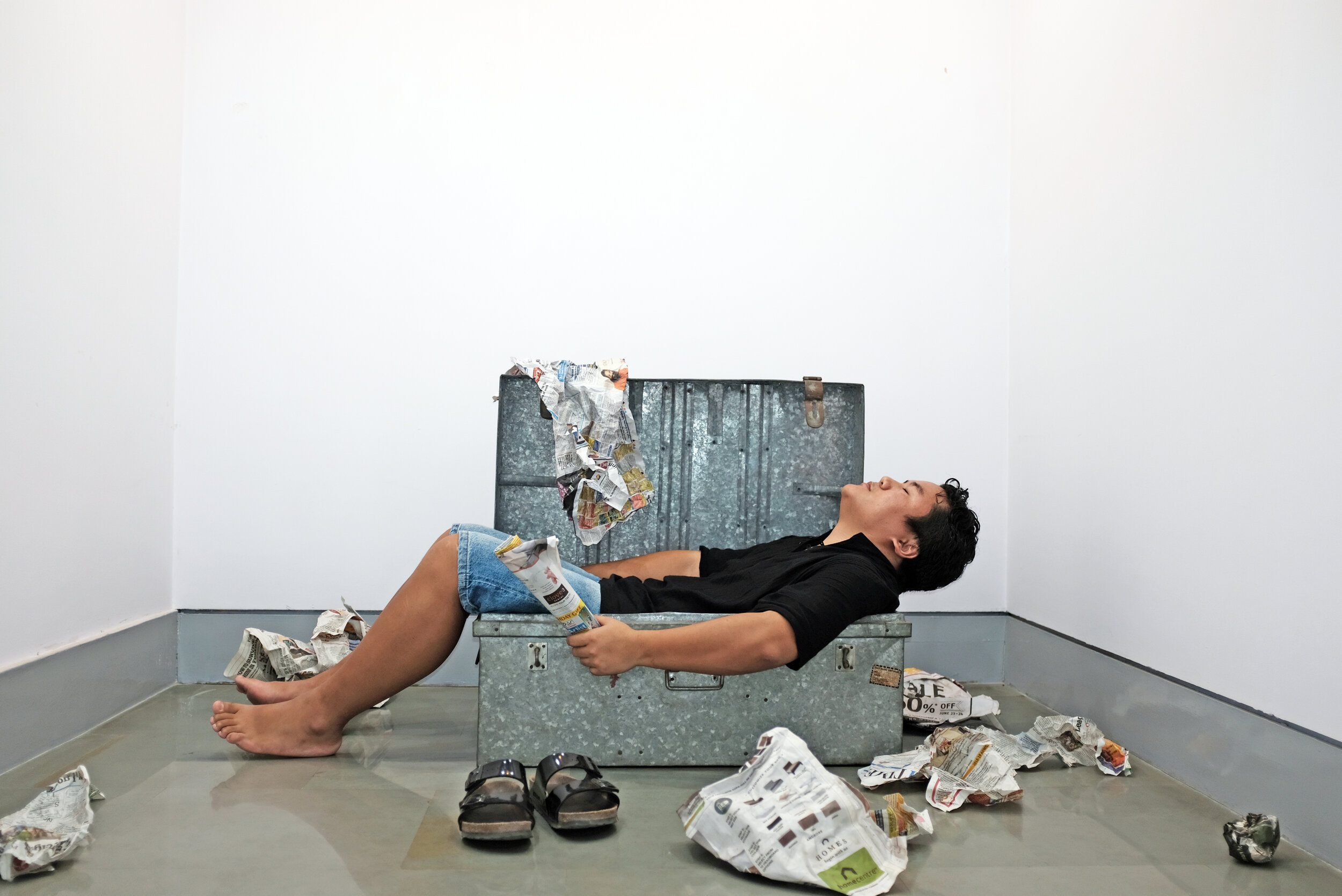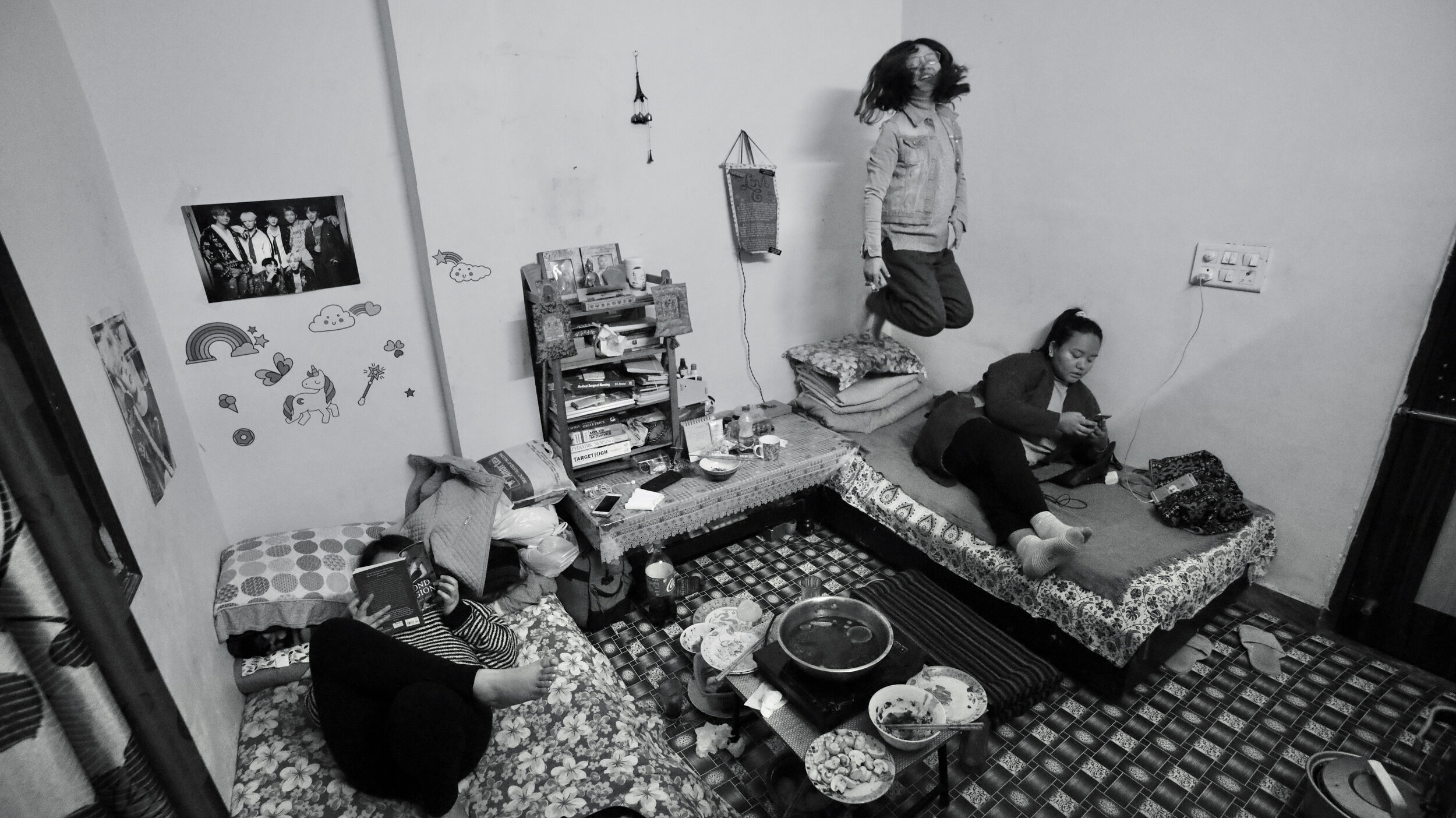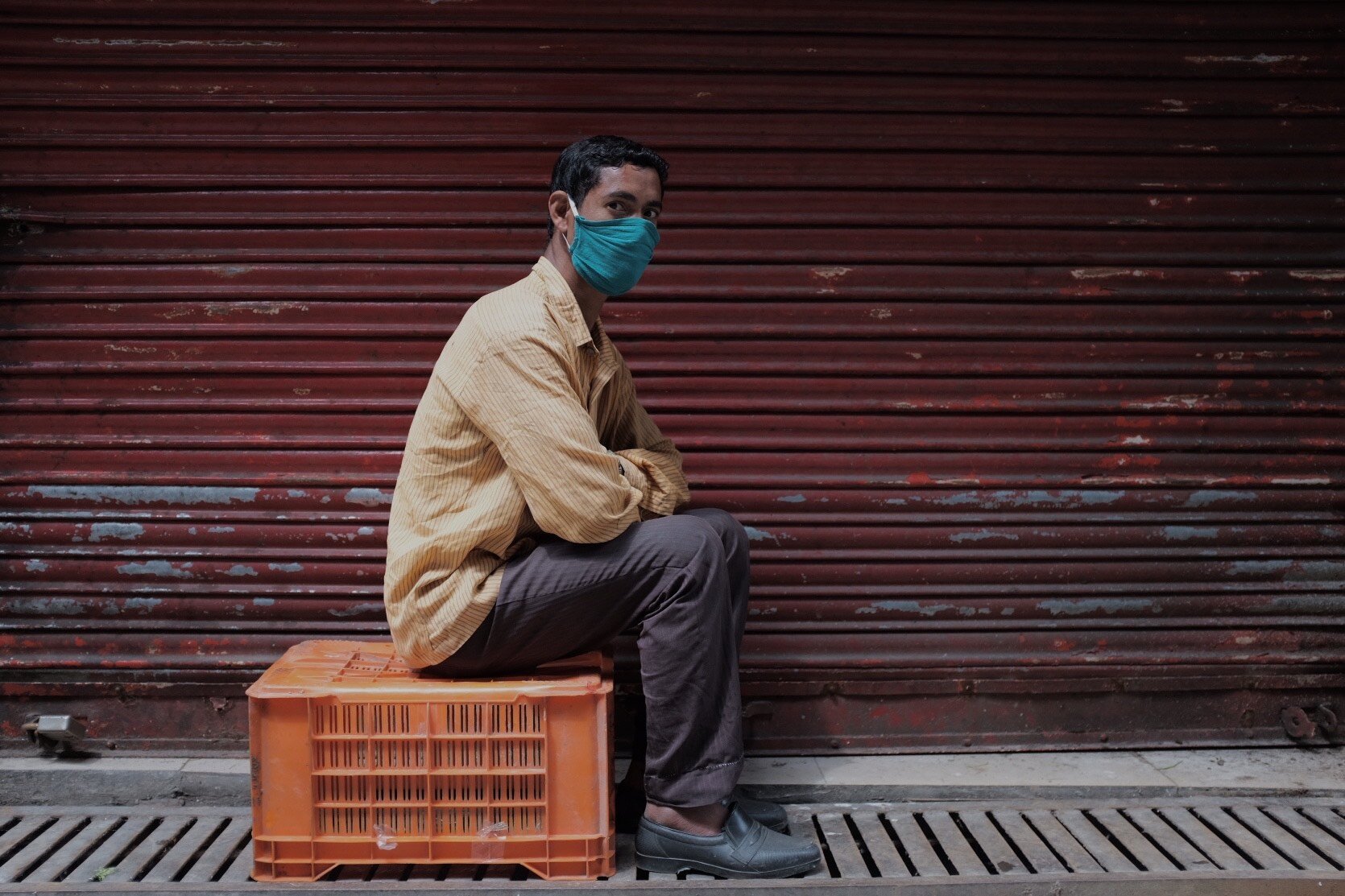Interview with Kalsang Jigme: The Spotlight Series Ep. 6





The Spotlight Series is a documentary series by The Yakpo Collective that highlights prominent Tibetan contemporary artists and their artworks. The series exist to provide resources for generations to come, in order to foster a learning environment based on art and creativity.
Introduction/ Current Work
Firstly, Tashi Delek to all, my name is Kalsang Jigme. I am currently residing in Dharamshala, and my profession is photography. I studied at Mussoorie Homes, and I did my college studies in Bangalore at St. Joseph’s college, then I went to Delhi to pursue photography at an institution called “Pearl Academy”. After that, I started doing freelancing, some work here and there, and that is about it.
How did he decide to pursue photography? Why photography? Was there a point in their life what influenced his decision?
The first time I discovered a passion for photography was when I was young, as I loved looking at pictures. You know there are some people who learn better from books and such (FIX). For me, pictures and drawings helped me gain more knowledge and information about the news and the world. From this, I found a strong desire in my heart to become a photographer in the future. That being said, in India- there is not a strong lamthon that directs us to pursue one field or another, or directs us to opportunities (for work). When I was in the 12th grade, I knew I wanted to pursue photography, but because of societal pressures/influence, I decided to pursue another career path instead of photography. When I entered college, I majored in physics and maths. What I realized at this time was, as much as I studied for physics and maths, I never felt satisfaction– you know when you learn a subject and you feel a sense of happiness? I did not feel that. Often I was anxious and worried that I would not be able to understand these subjects. I felt that if I just stayed put and continued to pursue this path, it would inevitably harm my future plans. Because I still had that passion for filmmaking and photography, I decided to put my all into it. Even though it was costly, I gathered financial support from relatives and found means to support my passion in order to focus solely on photography. Once I decided to focus on photography, that feeling of anxiety I felt before disappeared– I always felt a desire to learn. There was no need for others to tell me to learn. This is when I finally realized that photography was my passion. Knowing this, whenever I became tired or faced financial obstacles, I was never worried because of my burning desire for photography. This is how I knew of my desire for photography, and how I began pushing for this path.
Any pressures from family/parents;/society?
In my case, my parents are back in Tibet. I am the only one in India. Some people face pressure from their parents, the challenge I faced was that I had nobody to enforce pressure on me. I felt so empty because I had nobody to direct me to any path. When I first came out of grade school, I took an exam at the Men-tseekhang (Tibetan Medicine School), and got accepted. Once I got into the Men-Tseekhang, many people told me to stay at Men-Tseekhang as it was a very good institution. That being said, I had no plans to stay there in my heart. I wanted to take courses in photography and filmmaking, but because of pressure from my teachers and society, I felt stuck making a decision. Though these people’s guidance/advice was good, I felt that it would greatly affect my career plans if I were to listen to them and stay at Men-Tseekhang. I decided to ignore their advice/pressure and just follow my heart and passion. This is how I was able to come back to photography.
What are you looking for when taking you photos (street photography)? Angles etc?
When going outside to take pictures, usually you have a target or a goal– I’m going to take this photo, I’m going to take it there, I’m going to take it from this angle– thoughts like that. Photography has a different meaning for each person. For me, photography is a channel to express my feelings, something like that. Therefore, when I get mental stress from news or face challenges, I go outside to take photos. When taking pictures, I feel like a burden has been lifted off of my back/ I feel light/unburdened, and feel joyful. If I get stressed and go out to take photos, most of my subjects are still objects. I like to capture non-living things such as chairs or windows. Now when I feel calm and good, I go outside and take portraits of people, talk with them, listen to their stories and learn about their respective backgrounds, as well as moving subjects. Firstly, when I go to take pictures, my subjects heavily depend on my mood. Secondly what is important is the connection between myself and the subject. Sometimes when there is no connection, no matter how many times I retake the photo– it does not come out good. Other times when there is a good connection between the subject and I, “dhi par dhi-yakpo gyaya la ngarang ki nuba tsangma phagi gang la pung thugi dhoo ah”.
What does Tibetan Contemporary Art Mean to You? Does your Tibetan identity influence your work?
Yes, an overarching theme of my work is on topics related to the Tibetan community. Therefore, I push to take photos in Dharamsala to show the reality of the exile Tibetan community there. Because Dharamsala is a tourist hotspot, many tourists think that Dharamsala is just a beautiful, romantic place. That is how they describe it in articles, essays, like this. However, when you really look at Dharamsala, this is not the case. It is not such a beautiful, romantic place. It is the residence of a group of people who have lost their country. If you listen to the stories of the people here, many of their fathers and mothers were killed by the Chinese, they lost their countries, and are part of a group of people who have not been able to return to their homeland for their whole life. Before I moved to Dharamsala, I was in Delhi, so when I came to Dharamsala, my main goal was to show the real problems that the exile Tibetan community faces such as the living standards, and to highlight their stories. I think that mediums such as art is a good way to share about [the reality of] the exile Tibetan community. There have been many essays, poems, and articles written about this community, but there hasn’t been a lot of usage of art to depict the true reality. Therefore I think it is good to use mediums such as art to highlight these important narratives.
In your instagram, many of your pictures showcase windows through different angles. Is there a meaning behind these angles/these pictures?
First thing, when I take pictures, I try to share whatever story I am trying to share. Some photographers take pictures with the narrative that the people want to share. Thus there are two ways of sharing stories. When I am trying to share a story–the way in which I take photos depends upon my current feelings and mood. My photos taken from low angle shots, ones that are in darker lighting express my feelings of sadness and discomfort. Whereas some of my photos are really bright, expressing my feelings of joy. When you really look at my photos, you can tell about my feelings when taking these shots. Therefore I show my feelings through these different photos. I do not go and take photos to express a narrative that people want me to tell, I take pictures based on how I feel and want to share, and then I put it up on Instagram– something like this.
Curated pictures background (girl with a coca cola)/approach
For the first photo, “Self-Portrait”, you can see that I am in a trunk holding a newspaper on my side, with newspapers scattered all around me. This was a planned photo, a recreation–if I may. The story behind this is–during this time, I was very poor in language speaking ability. You know, language command? Whether it is in Tibetan or English, whatever language it is– no matter how hard I tried, it was extremely difficult to learn a language. While there was a problem in learning languages, I turned to photos to learn–photography. Photography, to me, is a language. Whatever I am feeling inside, I am able to capture that feeling through photography. While facing challenges in language speaking ability, it felt almost as though these languages were putting enormous pressure on me, like it was killing me. Even if I wanted to learn, there would be a problem and I would not be able to speak what I was feeling. To express that feeling at the time, I created this self-portrait of me in a trunk. One of the inspiring ideas for this self-portrait was from this European painter, Jaques-Louis David, a French painter. He has this painting, “The Death of Marat” – here, I’ll show you. The story behind this photo of a dead man in a bathtub is of a man who wrote articles for the government and was killed. Therefore I found this painting to be very beautiful as there is a connection between painting and photography. Taking from this style of painting, I decided to express my feelings through photography.
The second piece is Girl with a Coca Cola. Up until now, one of the most beautiful paintings I have seen is Vermeer’s painting, “Girl with a Pearl Earring.” I am a big fan of paintings, as for photographers like me, there is much to learn from paintings. Many people think that there is a big difference between photos and paintings, but in my opinion– there is a lot that we learn from paintings such as composition, or color, or fixing elements, or a subject’s expression, many things like this. Therefore, inspired by the Girl with a Pearl Earring, I recreated this piece. In the actual painting, there is no Coca Cola, but the reason I decided to put the Coca Cola in my piece was to express modernity. In this modern era, Coca Cola is one of the most famous/prominent brands, a brand that everybody knows of. The painting is from older times, whereas the Coca Cola is from recent years. Therefore I wanted to display an intersection of these two time periods. These are my thoughts behind taking this photo. Vermeer’s paintings have been recreated by many photographers, the reason being that his paintings are a great example of the use of lights and shadows– very similar to photographs. He has created these works almost exactly like photographs. Therefore many photographers choose to recreate his work, and this is why I decided to express my own thoughts while recreating his work.
“Miscellaneous” reason and background
When you take a first glance at this photo, it seems as though it was taken in the spur of the moment/randomly. This was actually a planned photo. One time, when I had free time after eating dinner, I decided to have a random photoshoot. There is no specific reason or story behind this photo, but I was deeply inspired by an Indian photographer, Ragu Rai. When people describe his work, they say a “multi-focus area”, which is when there are many elements to focus on in a photo. I found this photography style to be very beautiful. Normally when I take photos, I focus on single subject areas. If it is a person, it is focused on a person, when it is a bird, it is focused on a bird. Therefore, taking from Ragu Rai’s style, I opted to have multiple areas of focus in this photo. When people look at this photo, they say it is beautiful. Thus I have used Ragu Rai’s style of photography as an inspiration for this photo, Miscellaneous.
From these three, what details do you really like, and which one is your favorite?
As per my favorite, it would be the Girl with a Coca Cola, because I have been wanting to recreate Vermeer’s piece for a long time. There are many European painters with beautiful paintings, such as Leonardo DaVinci, Vermeer, Van Gogh, and more. I have had a strong desire to recreate their paintings through photography for a long time. That being said, there are many times when you do not find the right subject to photograph, as they do not resemble the subject in the painting. However, I was able to find a subject that resembled the character in Girl with a Pearl Earring. We were able to call her up and schedule a time for the photoshoot, and I was elated to see the results of the shoot. For a long time, I waited and struggled to find the perfect subject to recreate this piece, and so when I finally shot the recreation, I felt extremely satisfied. I felt more inspired to shoot more ideas and recreations in the future. This is why this is one of my most favorite pieces.
What are some challenges you face as a photographer? Artist block. How do you overcome this barrier?
I too, have felt this artist block. When I first started photography, I faced many challenges such as finding an interesting subject or not finding the right composition in order to take the perfect shot. When I faced these issues, I went to senior photographers to ask for their advice on how to overcome these challenges. Many told me that it is not just about holding the camera, you need to read books on photography. This is when I started reading books on photography. After reading these books, I discovered a huge change in the way I approached the composition of my photos, and the way in which I understood photos. It was easier to find a story or a meaning behind everyday items, such as books. Normally, pictures of books do not seem interesting, but I was able to find a way to see such items in a different light. Therefore, when problems such as artist block arise, I turn to books or works from famous photographers from back in the day for inspiration and guidance to overcome such barriers.
Any advice for emerging artists when overcoming challenges
In terms of advice, I feel as though I am not in any position to give any advice–I am a complete beginner. If there are a hundred steps in terms of photography skill levels, I am just one the first step. That being said, for this video conference– I would like to recommend some books, as it would be beneficial to read for emerging photographers. The first one is “What Tibet Was” by Tsarong. This is the first book to be released by a Tibetan photographer. To look at this book would definitely be beneficial. The second one is “Photography in Tibet” by Clare Harris. This book is also very important as it narrates Tibet’s history through photographs. It would be helpful for those interested in Tibet’s history, not just those interested in photography. Generally, for those interested in photography, “On Photography” by Susan Sontag, “Understanding Photography” by Joan Berger, “Camera Lucida” Rolling Brothers, as well as “Photography as Contemporary Art” are just some of my recommendations when it comes to understanding the meaning behind a photograph and the art of photography, as well as separating the term from a tangible camera. There are many things to learn, and many things that can inspire you to further pursue photography.
Favorite photographer? Role models? Any influence on your work?
In terms of current photographers, I would say the Indian photographer, Raghu Rai. I look up to many of his works. In terms of past photographers, I would say the founder of Magnum Photos, Henri Cartier-Bresson, a French photographer. I always look up to his works and he has many books, one of them being “Decisive Moment”, which provides a different perspective to photography and photographing style, which I was able to learn from. There is also a Hungarian photographer, his name I cannot pronounce correctly–André Kertész. His photography style has had a huge influence on much of my works. He has a special way of fusing both photography and painting styles, and his style has definitely influenced me as I try to recreate his style.
What you think of platforms focused on Tibetan Art such as YC.
Due to the current situation of COVID-19, we are all living under lockdown in India and elsewhere, and we rely heavily on social network platforms to connect. Before the use of social media, I did not know many Tibetan artists. Because of the lockdown, an emphasis on social media, and through conversations with friends, I was introduced to the works of many Tibetan artists. One of the most beneficial outcomes from this lockdown was that I was able to connect with many Tibetan artists from platforms like Yakpo Collective, from which I was able to follow many of them on Instagram, view their works, and even reach out to some for guidance when I don’t understand something. It is imperative to have such a platform on social media, because of geographical boundaries. I am in India, whereas many artists are abroad, so in the case that there was no social network/social media platforms, it is easy to say we are living in completely different worlds. These platforms help us strengthen connections, exchange ideas, and allow us to view each others’ artworks. Societies, lifestyles and subsequent photography styles are different between those in India and those abroad. Our way of thinking is different, and the way we take photos can be different too, so these platforms can be beneficial when it comes to helping one another, transcending boundaries. I find it very good that these platforms exist allowing us to exchange our ideas– it’s very good.
Dream photography location
I have two main dream photography locations–both of which are very difficult to travel to. The first being Mount Everest– I would like to go on top to take photos, if I am able to. Before I reach 40, if I am able to go, I would like to take photos of the view on Mount Everest. Many photos have been taken on Mt. Everest, but I want to explore the way in which I might take photos if I were to be able to go. The second being–if I am unable to go to Mt. Everest–Antarctica. I would like to take photos of the wildlife there, the environment there, the society there. I would really like to see how it is there. To be honest, it is very far from here, nevertheless I would like to try hard to reach there. These two places are my dream locations as I would like to visit to observe the environments there and take photos of.
Why share the narrative of exile-Tibetan diaspora community?
The main reason is because when I was in college, my peers would tell me that they would love to visit Dharamsala. The way in which they saw Dharamsala was similar to how many people abroad–or non-Tibetans saw it, without the real issues that Tibetan people were facing there. For example, they often see many photographs of Tibetan Buddhist monks and old grandmothers chanting prayers, but they do not see the inner workings of the society in Dharamsala. Secondly, the younger generation may not see the real Dharamsala as it is through means of social media platforms. Therefore, I feel that through photographs, they might be able to understand the plight of exiled Tibetans. I had this realization when I made a Tibetan documentary. The title is called “White Flower”, which is about two Tibetan kids who have come to India from Tibet, documenting their journey from Tibet and the issues they faced. When this documentary was screened in Delhi, many Indian people cried, expressing their sadness over the story of these kids. What surprised me was that even some Tibetan kids were crying, expressing their shock that they had never seen something like this. This is something for us to think about–if a Tibetan person has not seen the plight and story of many Tibetans, it is only expected that an Indian person or a non-Tibetan person will know of the plight of Tibetans. Keeping this in mind, I want my work to appeal to both Tibetans and non-Tibetans.
Any camera recs? Favorite camera? Fun question
For me, I use three main cameras. The first, main camera used for important projects is the Canon 5D Mark 4. That being said, I don’t want to recommend this camera or that camera. As technology advances, regardless of brands–the function of a camera remains about the same. Whether it comes to the internal sensor or overall quality, although the brand is different, the quality is the same. One camera that I use all the time and bring along with me is this–Fuji F100. I bring this along with me wherever I go. It has a prime lens, easy to carry, and overall very convenient. Another camera I use is a film camera. There is a story to this camera– an old Tibetan photographer gifted me this, who used this camera prior to the invasion of Tibet–before 1959. He passed away, but before he passed away, he gifted me this camera as he told me “you like taking photos”, therefore I hold on to this camera. It still has function, and when I have time, I take film pictures. The excitement of taking a photo from a film camera is completely different than a digital camera. Once taking your photos, you only get to see your results a month after, which is what I find beautiful about film.
Why FUJI F100? Convenience?
In India, when I brought a big camera, many people shy away, wondering if you are a reporter. One time I brought along my Canon 5D Mark 4, many people asked if I was a professional photographer, a news reporter, stuff like that. The moment I take out a big camera, people notice immediately and the expression changes, which is why I bring along the Fuji F100. When I bring this camera, people ask me if I am a tourist, whether or not I am sightseeing. Because of this, I found it important to use this smaller convenient camera. The color effects in this camera are great as well.